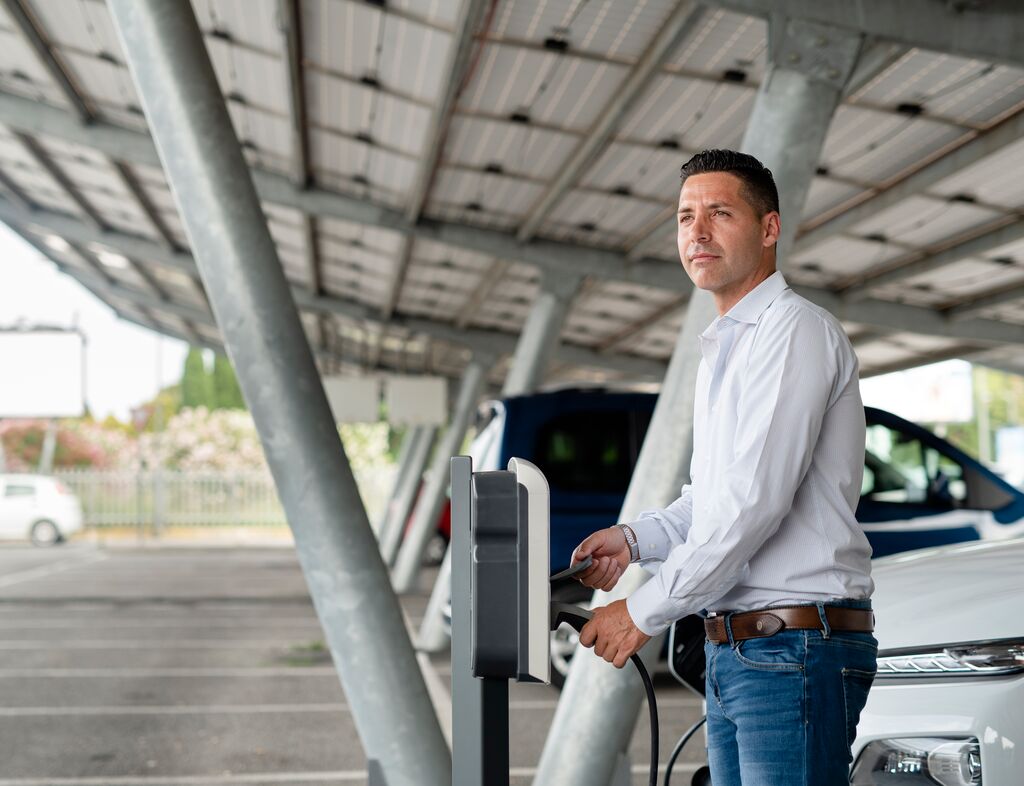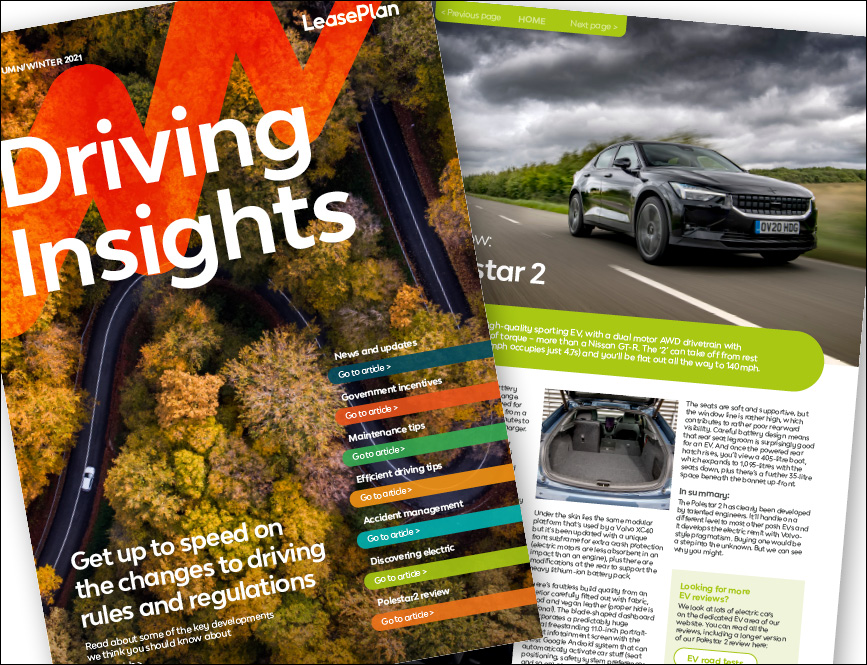From avoiding arguments at public EV charge stations to getting the most out of your driving experience, here are our top driving tips for EV drivers
Whether you’re a seasoned electric vehicle (EV) driver or thinking about making the switch, it’s important you know the facts about electric cars, how to look after your vehicle and support the growing EV driver community.
Driving an EV is quite different from driving other vehicles with an internal combustion engine (ICE) such as one fuelled by petrol or diesel. Not only is the technology different, but there’s a whole etiquette around charging that you need to be aware of.
To help you get the most out of your vehicle and enjoy all the benefits that an EV brings, we’ve got out EV experts to pull together their top tips for driving an electric car.
1. Consider others when charging in public
- Look after public charging points –Treat public charging infrastructure with just as much care and respect as you would your own charging solutions at home. That will keep it in optimal working order to provide fast and flawless charging for everyone. When you’re finished charging, put the connector back in its receptacle and hang the cable as neatly as possible on its hooks to avoid a tripping hazard.
- Don’t use EV charging points as a parking spot –
An EV charging point is for charging, not parking – so don’t treat it as a personal all-day parking spot. Many of them are positioned at premium locations at public destinations, but if you don’t plan to charge your vehicle make sure you leave the spots open for those who do.
- Don’t hog the charger –
Likewise, don’t hog the charger for longer than necessary when you’re charging your vehicle. Think about how much you need to get to your next destination – if it doesn’t require 100% it would be courteous to vacate the spot for someone else to use. EV charging etiquette revolves around thinking of others in the EV community, so make sure you only stay there for as long as you need to. Most EVs come with mobile apps that allow you to monitor your charge level, so make sure you keep an eye on this throughout your stay.
- Never unplug another vehicle –
When using public charging points, it’s crucial to take other people’s needs into consideration. Never unplug another driver’s EV, no matter how long you think they’ve been there. This rule also extends to plug-in hybrid vehicles (PHEVs) – just because they have a backup combustion engine, doesn’t mean they don’t have a right to charge. The only exception to unplugging another vehicle is when the driver has left a note to say it’s fine to do so.
2. Explore the whole range of available charging options
An EV is similar to the average car: it’s inactive for around 20 hours every day. Utilise the vehicle’s downtime and charge it whenever and wherever you can access power – whether at a fast-charging point or public charging point while you’re out shopping or at the gym, while you work or via a wall-mounted unit outside your home overnight.
Here’s a breakdown of the four main types of charging options available and how quickly they can charge your EV:
| Type of charger | Power Output | Speed (vehicle dependant) | Locations |
| Ultra-Rapid | DC 100kW + | Up to 100 miles in 10 minutes | Selected Forecourt Services |
| Rapid | DC 50kW | Up to 33miles in 10 minutes | Motorway Services |
| Fast | 7kW | Up to 5 miles in 10 minutes | Home Workplace & Destination |
| Slow | Up to 3Kw | Up to 2 miles in 10 minutes | Home Workplace & Destination |
3. Look after your battery
To maximise the battery capacity and minimise the impact on driving range, avoid leaving your EV with a low battery level for a long period of time. You should also avoid charging your battery to 100% each time as this can put a lot of pressure on it.
Excessively hot or cold temperatures can also degrade your vehicle’s battery over time. If possible, park in an enclosed or sheltered location. This could mean in a shaded space on a hot summer’s day, or in a garage or car port if you’re charging at home.
4. Plan ahead
If you’re embarking on a longer journey, plan your route in advance and make use of online or onboard mapping services, apps and other tools to identify which public charging points you can use along the way. There are more than you may realise – in September 2020, there were 19,552 devices across 12,344 locations offering 34,084 connections, with more being added every month with many sites free to use.
You can see the latest details with Zap Map public charging networks.
Drivers can also opt for a Polar public charging subscription with fob and app. This is the UK’s largest public charging network, with more than 7,000 nationwide charging points.
5. Claiming back the electricity cost of charging
If you use an EV for work, you may want to claim back the charging cost for the miles you do from your employer. In theory, it’s possible to claim the price of the electricity, but in practice it’s very complex to track and report.
As a result, many employers prefer to use the official HMRC Advisory Electricity Rate (AER) rate, which is currently set at 5p per mile.
Please note, though, that these rates apply to fully electric cars. Plug-in hybrids use the standard business mileage rates for petrol or diesel, depending on their engine.
6. Watch your speed
In a typical ICE vehicle, the optimal speed for efficiency is around 50mph. An EV is slightly different. In an EV, the faster you go, the more energy you consume. The optimal speed is likely less than 10mph for most EVs, depending on static consumption like air conditioning and other electrical systems.
Obviously, we don’t recommend constantly driving at such a low speed. Instead, just keep an eye on your speedometer and be sensible.
7. Keep things steady
Rapid acceleration and harsh breaking use a lot of power. To make the most of your EV’s battery range, keep your driving smooth and steady.
If you can, try using a combination of cruise control and light-footed manual driving. Following these EV driving tips might mean you can increase the efficiency of your battery.
8. Shift some weight
The more weight you have inside the car, the heavier it is, and the more energy it takes to get things moving. You don’t need to go as far as removing seats and spare tyres though. Just make sure you’re not carrying any unnecessarily heavy items – you don’t need to take the kitchen sink on every trip.
9. Be a role model
EVs are the future of driving, so sooner or later every driver will have to learn these rules. That’s why it’s important to lead by example, understand key facts about electric cars and actively participate in the EV community. Make sure you share these driving tips along with your own when talking to friends and family, or with fellow EV drivers in your local area through apps and forums.
If you’re still unsure about whether an EV is right for you or want some more electric car information, check out LeasePlan’s Driver EV tool. Find the right vehicle for you based on your driving habits with the tool.
[updated 25/11/21]





